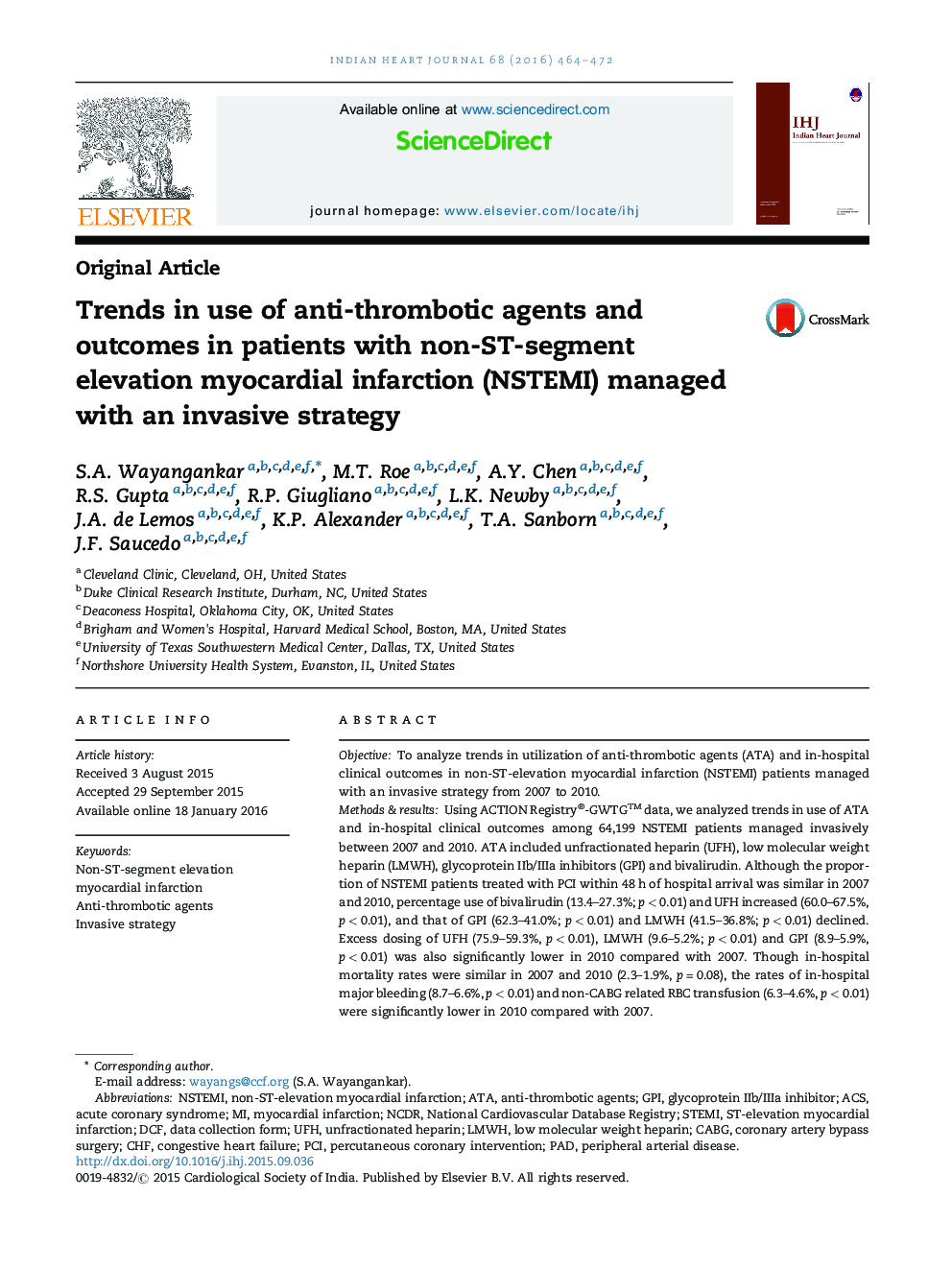| کد مقاله | کد نشریه | سال انتشار | مقاله انگلیسی | نسخه تمام متن |
|---|---|---|---|---|
| 2927314 | 1405438 | 2016 | 9 صفحه PDF | دانلود رایگان |
ObjectiveTo analyze trends in utilization of anti-thrombotic agents (ATA) and in-hospital clinical outcomes in non-ST-elevation myocardial infarction (NSTEMI) patients managed with an invasive strategy from 2007 to 2010.Methods & resultsUsing ACTION Registry®-GWTG™ data, we analyzed trends in use of ATA and in-hospital clinical outcomes among 64,199 NSTEMI patients managed invasively between 2007 and 2010. ATA included unfractionated heparin (UFH), low molecular weight heparin (LMWH), glycoprotein IIb/IIIa inhibitors (GPI) and bivalirudin. Although the proportion of NSTEMI patients treated with PCI within 48 h of hospital arrival was similar in 2007 and 2010, percentage use of bivalirudin (13.4–27.3%; p < 0.01) and UFH increased (60.0–67.5%, p < 0.01), and that of GPI (62.3–41.0%; p < 0.01) and LMWH (41.5–36.8%; p < 0.01) declined. Excess dosing of UFH (75.9–59.3%, p < 0.01), LMWH (9.6–5.2%; p < 0.01) and GPI (8.9–5.9%, p < 0.01) was also significantly lower in 2010 compared with 2007. Though in-hospital mortality rates were similar in 2007 and 2010 (2.3–1.9%, p = 0.08), the rates of in-hospital major bleeding (8.7–6.6%, p < 0.01) and non-CABG related RBC transfusion (6.3–4.6%, p < 0.01) were significantly lower in 2010 compared with 2007.ConclusionCompared with 2007, patients with NSTEMI, who were managed invasively in 2010 received GPI and LMWH less often and bivalirudin and UFH more frequently. There were sizeable reductions in the rates of excess dosing of UFH (though still occurred in 67% of patients), GPI and LMWH. In-hospital major bleeding complications and post-procedural RBC transfusion were lower in 2010 compared with 2007.
Journal: Indian Heart Journal - Volume 68, Issue 4, July–August 2016, Pages 464–472
